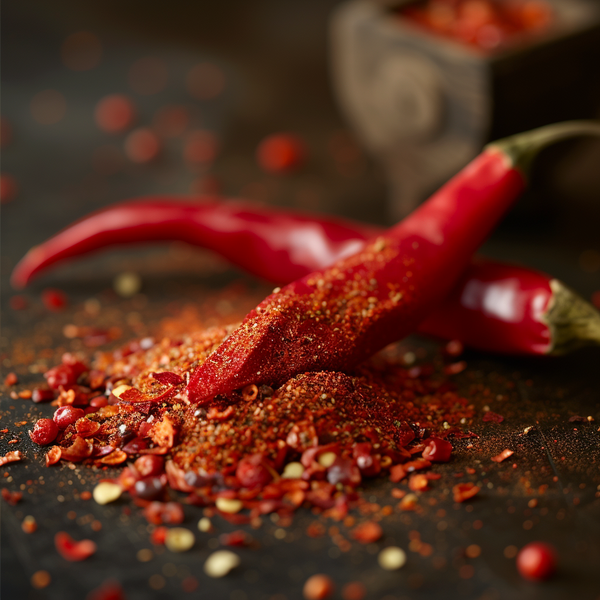
Cayenne pepper
Cayenne pepper, a type of Capsicum annuum, is a hot chili pepper used to flavor dishes and is well-known for its spicy heat and vibrant red color. It can be used fresh, but it's most commonly found dried and ground into a fine powder. Cayenne pepper is a staple in many cuisines around the world, particularly in spicy dishes. Here's how cayenne pepper is commonly used in cooking:
Spice Mixes and Seasonings:
Cayenne pepper powder is a common ingredient in spice mixes, such as Cajun and Creole seasonings, chili powders, and curry powders, contributing heat and depth to the blends.
Sauces and Marinades:
It's used to add heat to sauces, marinades, and dressings, ranging from hot sauce and barbecue sauce to marinades for meats and seafood.
Soups and Stews:
A pinch of cayenne can enhance the flavor profile of soups, stews, and chilis, adding a spicy kick that complements the other ingredients.
Meat and Seafood Dishes:
Cayenne pepper is used to season meat, poultry, and seafood before cooking, whether it's being grilled, roasted, fried, or sautéed, adding a spicy flavor to the dishes.
Vegetable Dishes:
It can be sprinkled on vegetables before roasting or sautéing to add a bit of heat and elevate the overall taste of the dish.
Baked Goods:
In small amounts, cayenne pepper can be added to baked goods, such as cornbread, chocolate desserts, and savory scones, to create a surprising warmth that balances the sweetness.
Egg Dishes:
Cayenne pepper can spice up egg dishes like omelets, scrambled eggs, and quiches, adding both color and heat.
Beverages:
It's sometimes used in small amounts in beverages, such as hot chocolate or certain cocktails, to add a warm, spicy undertone.
Homemade Spice Rubs:
Cayenne pepper is often included in spice rubs for grilling or roasting meats, providing heat that penetrates the meat during cooking.
Preservation:
Cayenne pepper's spicy properties make it useful in preserving foods, as the capsaicin can inhibit the growth of bacteria.
When using cayenne pepper in cooking, it's important to start with a small amount and adjust to taste, as it can be quite spicy. The heat level of cayenne pepper can vary between different batches and brands, so it's always best to add cautiously and taste as you go. Cayenne pepper not only adds heat but also depth and complexity to dishes, making it a valuable ingredient for those who appreciate spicy flavors.
Nutritional Information
calories
32
carbohydrates
6.7 g
fats
0.44 g
protein
1.74 g